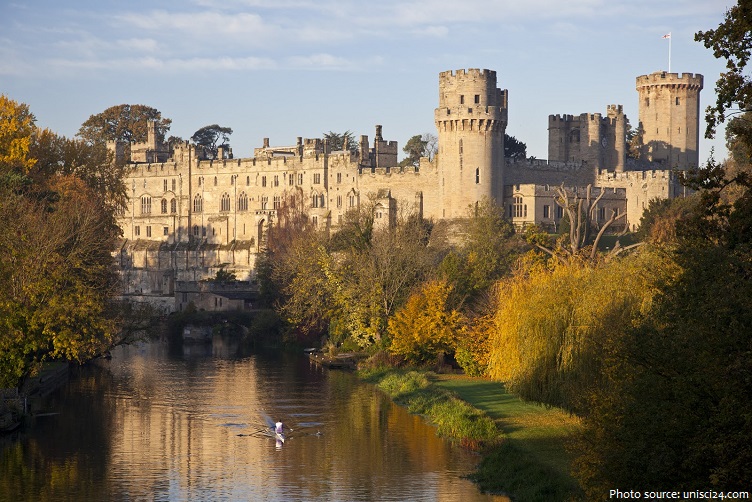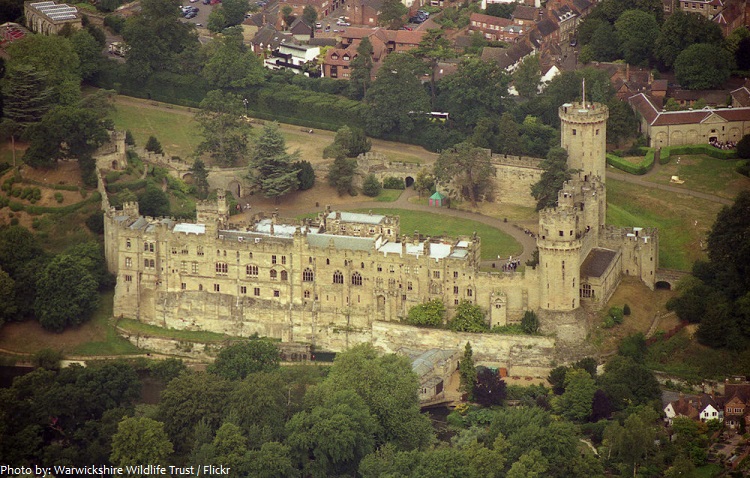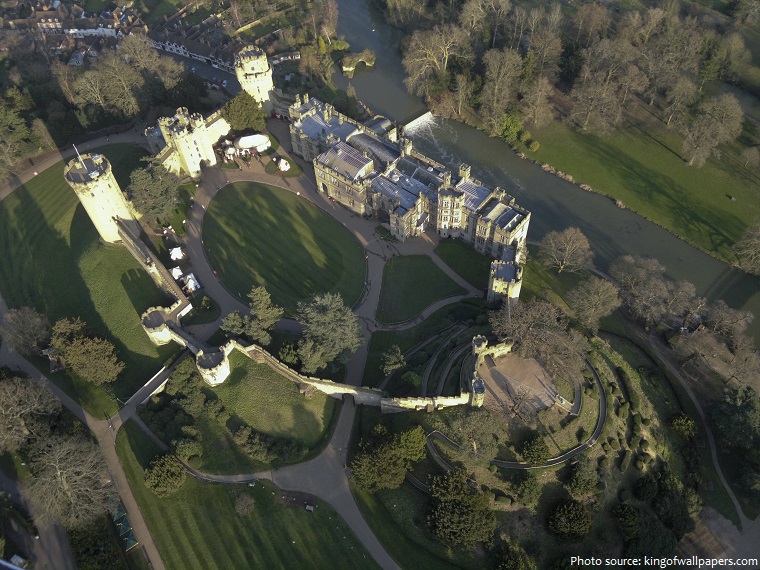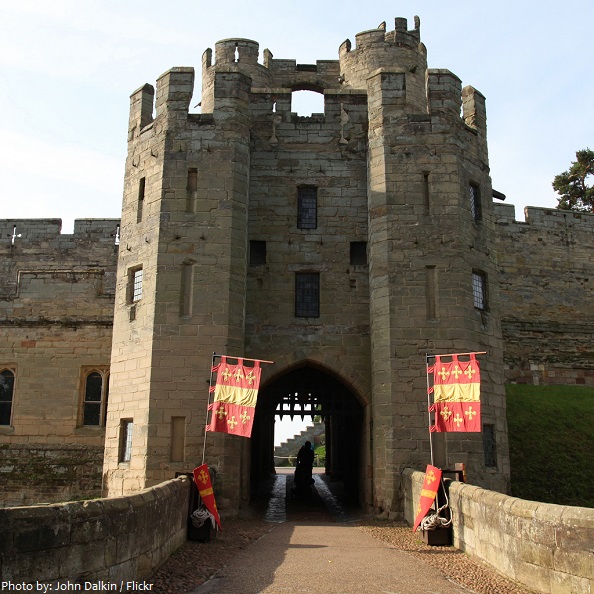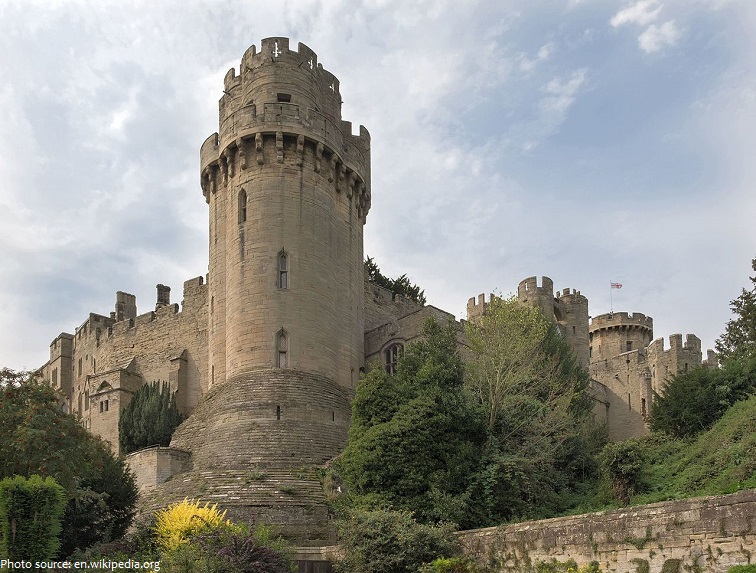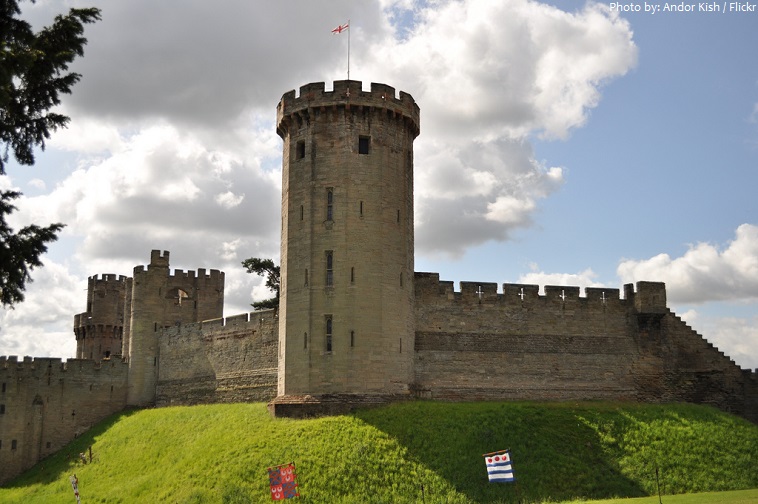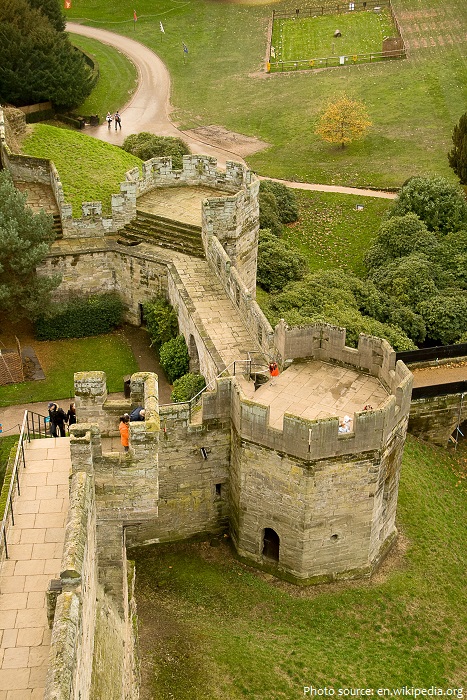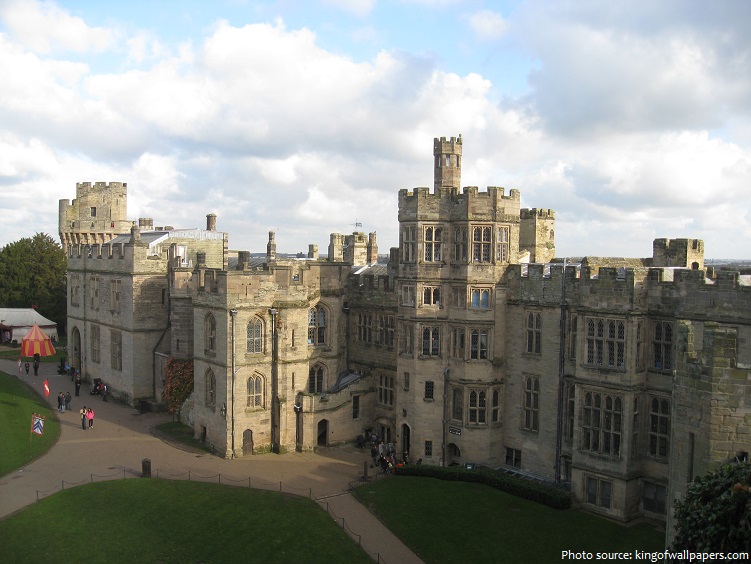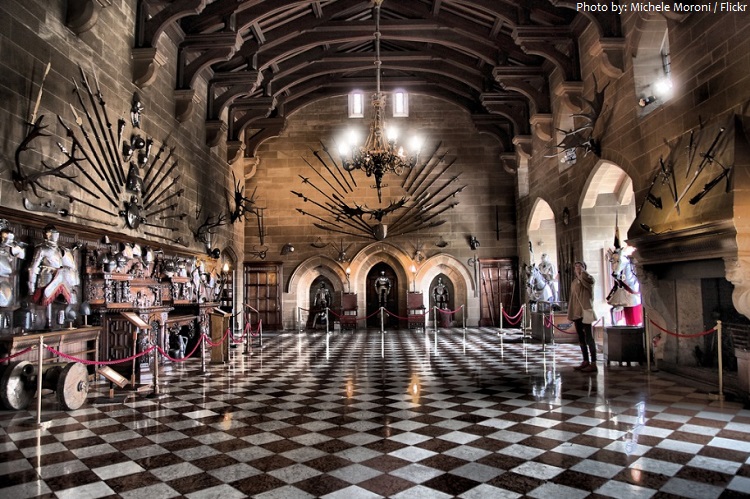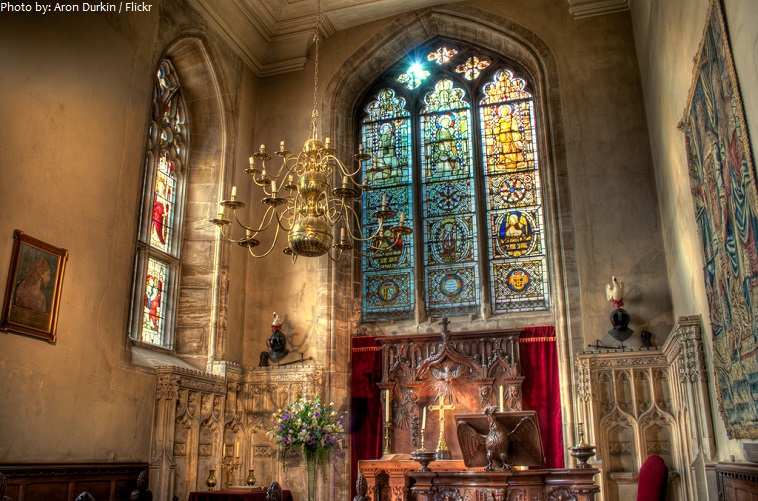Warwick Castle is one of the most famous and daunting castles in the world.
The castle is located in the town of Warwick in Warwickshire, England.
It is situated on a strategically planned location at the bend of the River Avon.
Warwick Castle has a chequered history which moves from its construction as a Wooden Motte and Bailey castle by William the Conqueror to a massive stone fortress.
After the Norman conquest of England, William the Conqueror established a motte-and-bailey castle at Warwick in 1068 to maintain control of the Midlands as he advanced northwards.
In 1153, the wife of Roger de Beaumont, 2nd Earl of Warwick, mistakenly handed the castle over to the invading army of Henry of Anjou (later Henry II) after she was tricked into believing her husband was dead. As if that wasn’t bad enough, Roger de Beaumont actually did collapse and die when he heard what she had done.
The original wooden motte-and-bailey castle was rebuilt in stone in the 12th century, during the reign of King Henry II (1154–89).
When Warwick Castle was rebuilt in the reign of King Henry II it had a new layout with the buildings against the curtain walls.
The castle is surrounded by a dry moat on the northern side where there is no protection from the river or the old motte; the perimeter of the walls is 130 meters (425 feet) long by 82 meters (270 feet) wide. The two entrances to castle are in the north and west walls.
Under Thomas de Beauchamp, 11th Earl, the castle defences were significantly enhanced in 1330–60 on the north eastern side by the addition of a gatehouse, a barbican (a form of fortified gateway), and a tower on either side of the reconstructed wall, named Caesar’s Tower and Guy’s Tower. The Watergate Tower also dates from this period.
The gatehouse features murder holes, two drawbridges, a gate, and portcullises – gates made from wood or metal. The towers of the gatehouse were machicolated.
Caesar’s Tower standing at an impressive 44.8 meters (147 feet) tall, this is the tallest tower at the castle, and comprises of three storeys, excluding the Gaol. It has an irregular quatrefoil or cloverleaf shape and is topped by a platform with a crenellated and machicolated parapet.
Guy’s Tower is twelve-sided, stands 39 meters (128 feet) tall and has five storeys. The first four storeys consist of a central stone-vaulted chamber with two small side rooms; a garderobe (toilet), the other was probably used as a bedchamber. The fifth storey is a hexagonal guardroom. During the Civil War the windows here were enlarged so that they could take small hand-held cannons.
In the early 1480s King Richard III instigated the construction of two gun towers, Bear and Clarence Towers, which were left unfinished on his death in 1485; with their own well and ovens, the towers were an independent stronghold from the rest of the castle, possibly in case of mutiny by the garrison. With the advent of gunpowder the position of Keeper of the Artillery was created in 1486.
The residential buildings line the eastern side of the castle, facing the River Avon. These buildings include the great hall, the library, various rooms, and the chapel.
The Great Hall is the largest room in the Castle and continues to be the one visitors enjoy spending the most time exploring. In the early middle ages, straw and dirt covered the floor of the Great Hall. The Great Hall as it stands today was first constructed in the 14th century. It was rebuilt in the 17th century and then restored in 1871 after it had been badly damaged by a fire which swept through part of the Castle.
Sir Fulke Greville, the first Lord Brooke, authorised the building of the small chapel in the early 1600s. It may be on the site of another chapel founded as long ago as 1119. Until the start of the 20th century, the families of the Earls of Warwick would have come to the chapel to worship.
During the 16th century, Warwick Castle started to fall into disrepair. In fact, when Queen Elizabeth I visited, a separate building had to be built for her to stay in.
In 1604, Warwick Castle was given to Sir Fulke Greville by King James I. The Greville family, who owned the property until 1978, set about converting it to magnificent country house.
In the 17th century the grounds were turned into a garden. The castle’s defences were enhanced in the 1640s to prepare the castle for action in the English Civil War. Robert Greville, 2nd Baron Brooke, was a Parliamentarian, and Royalist forces laid siege to the castle. Warwick Castle withstood the siege and was later used to hold prisoners taken by the Parliamentarians.
Individuals had been visiting the castle since the end of the 17th century and this grew in importance through the 19th century.
Through the 20th century successive earls expanded its tourism potential until, in 1978, after 374 years in the Greville family, it was sold to a media and entertainment company, the Tussauds Group for £1.3 million, who opened it as a tourist attraction.
Tussauds performed extensive restorations to the castle and grounds.
In 2001, Warwick Castle was named one of Britain’s “Top 10 historic houses and monuments” by the British Tourist Authority; the list included Tower of London, Stonehenge, and Edinburgh Castle.
In June 2005, Warwick Castle became home to one of the world’s largest working siege engines. The trebuchet is 18 meters (59 feet) tall, made from over 300 pieces of oak and weighs 22 tonnes (24 short tons).
On 21 August 2006, the trebuchet claimed the record as the most powerful siege engine of its type when it sent a projectile weighing 13 kilograms (29 lb) a distance of 249 meters (817 ft) at a speed of 260 kilometers per hour (160 mph), beating the previous record held by the trebuchet at Middelaldercentret in Denmark.
In 2007, the Tussauds Group merged with Merlin Entertainments, which is the current owner of Warwick Castle.
Over its 950 years of history Warwick Castle has been owned by 36 different individuals, plus four periods as crown property under seven different monarchs.
